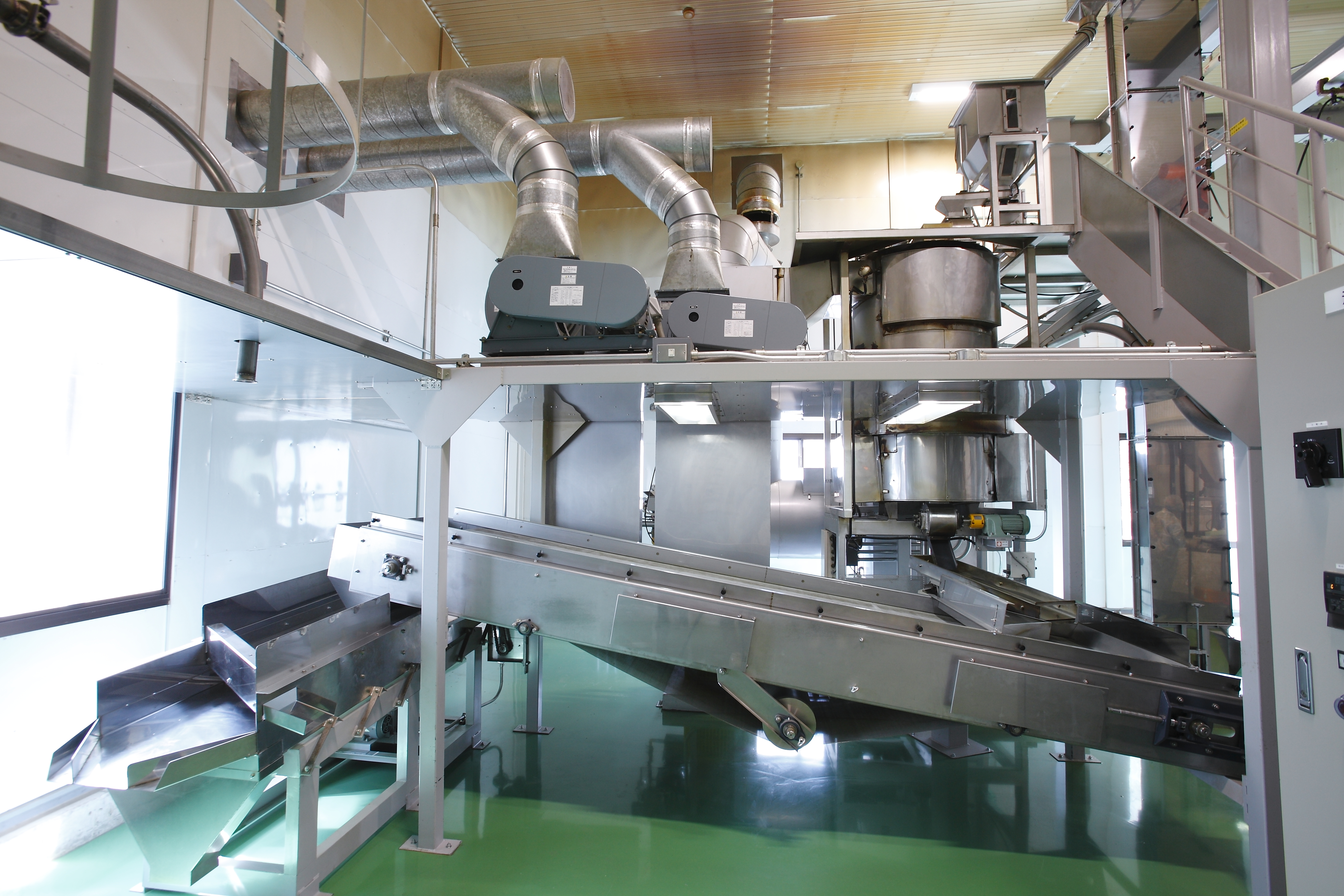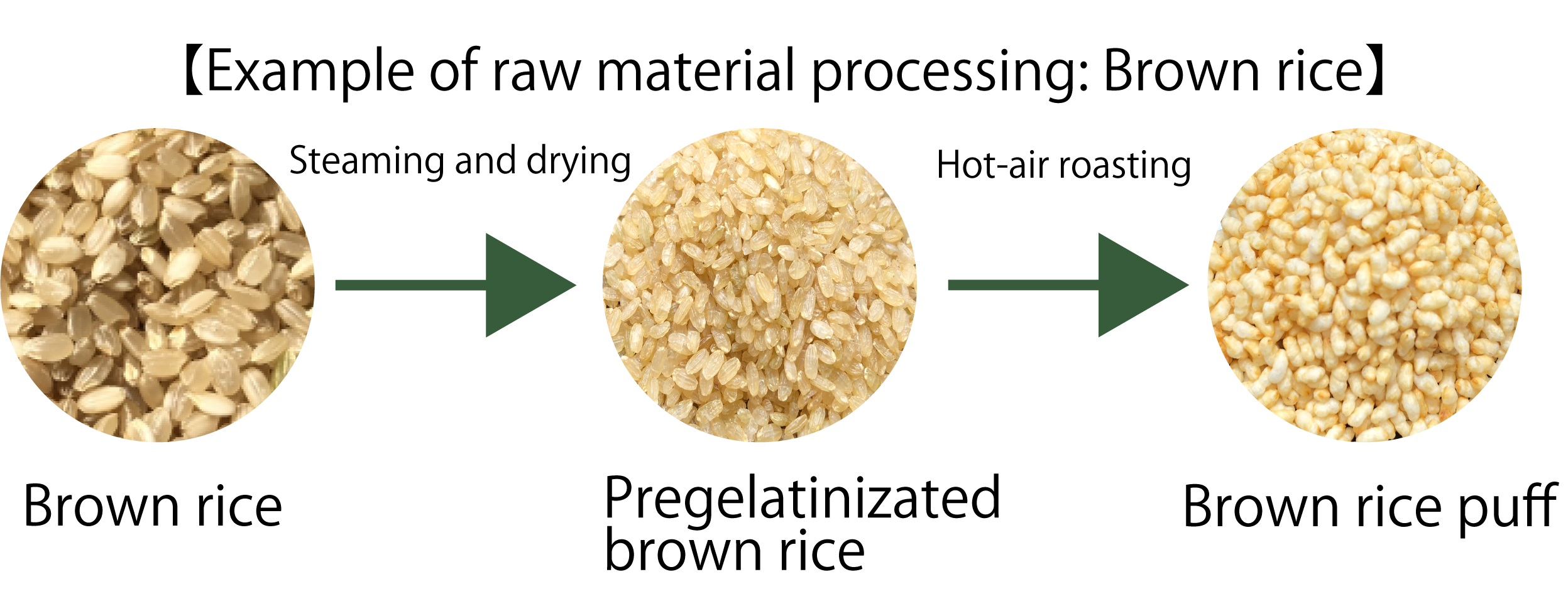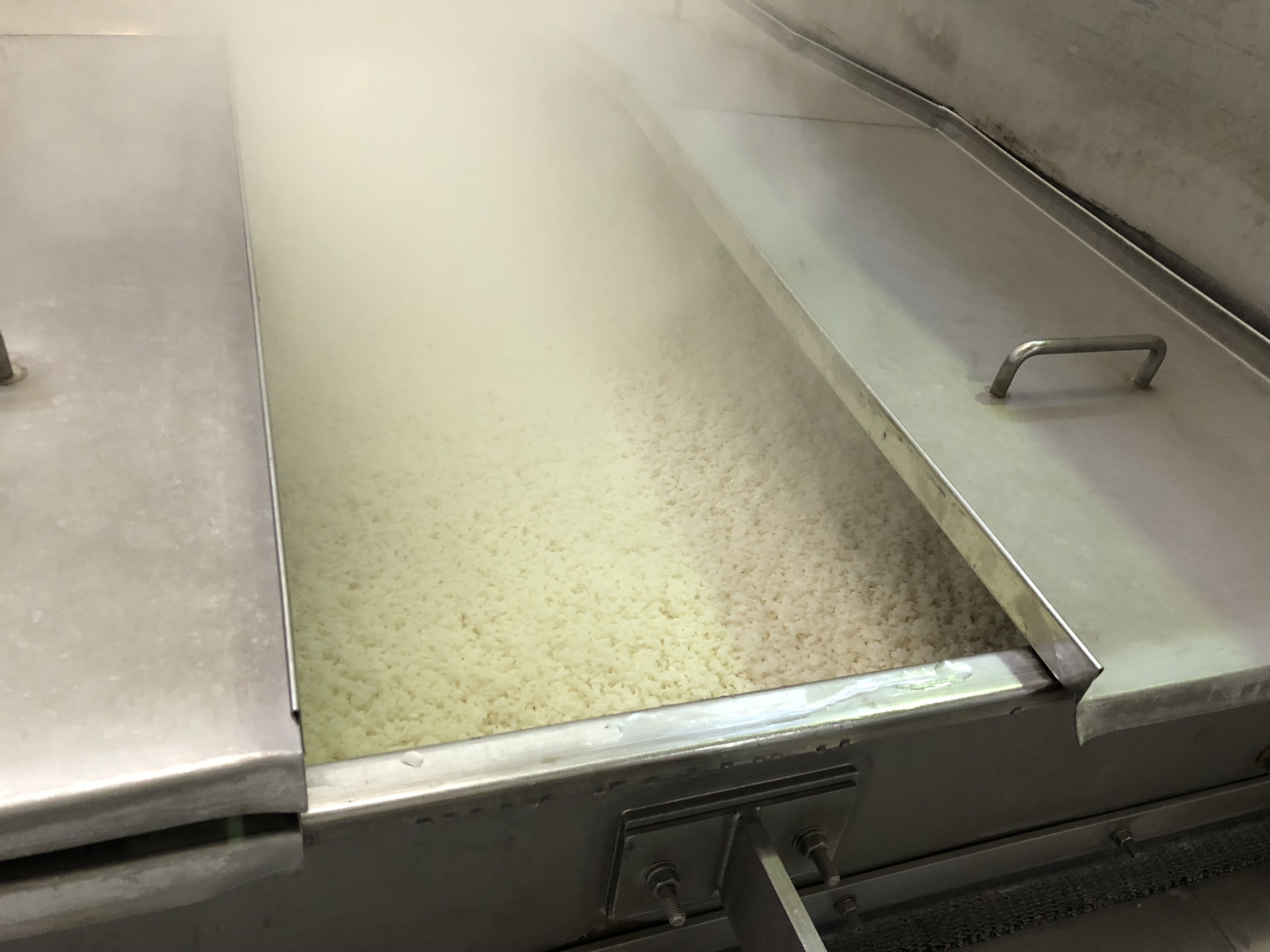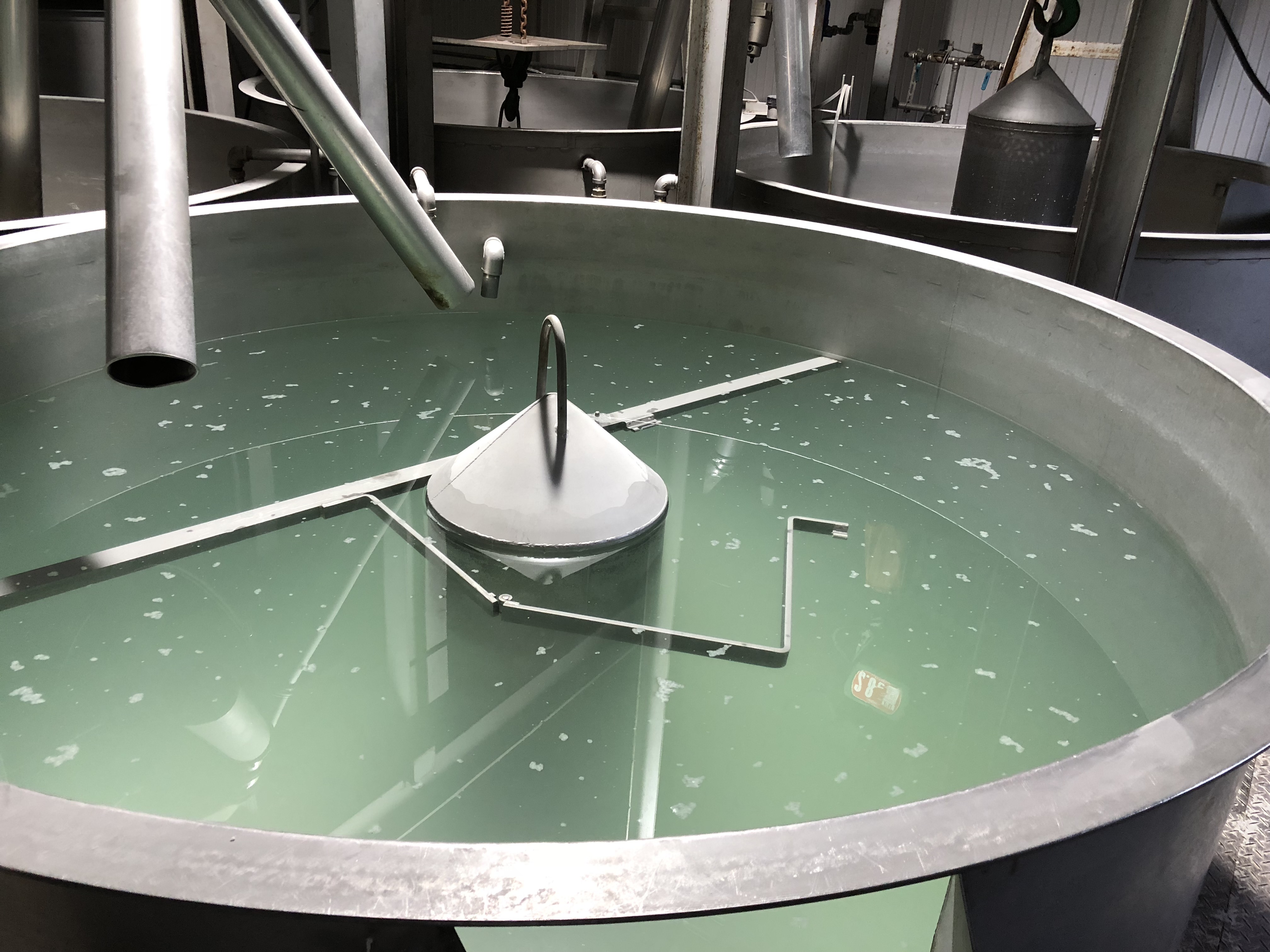About the puffing line
Puffing (Swelling Process)
To expand the raw material, we use a fluidized hot-air roasting machine, in which hot air is blown from the bottom of the material to roast it. The roasting causes the material to swell using the force of evaporation of the water inside the material. The expansion creates numerous small cavities inside the ingredient, causing the hard ingredient, which is densely packed with ingredients, to swell and change to a soft texture. As with extruders and poncakes, the ingredients are not subjected to such high pressure that their shape is drastically changed, so the original shape of the ingredients is maintained during puffing.
Therefore, even when puffed, the original shape of the ingredients can be clearly seen, making it suitable for seasoning processing.
Therefore, even when puffed, the original shape of the ingredients can be clearly seen, making it suitable for seasoning processing.

Example of raw material processing [Brown rice puff]
Brown rice is puffed by steaming and drying it in advance and roasting it at high temperature for a short time.
It is characterized by the fragrant aroma of brown rice and the sweetness of rice.
Because of its large bulk, it can give a sense of volume when used.
Compared to puffed products made with other methods, it has a chewy texture, is resistant to seasoning, and is popular for its resistance to blistering.
It is characterized by the fragrant aroma of brown rice and the sweetness of rice.
Because of its large bulk, it can give a sense of volume when used.
Compared to puffed products made with other methods, it has a chewy texture, is resistant to seasoning, and is popular for its resistance to blistering.

Pretreatment of expansion process
When roasting brown rice, azuki beans, etc. without pretreatment, they do not swell, resulting in roasted products that look burnt.
Soaking or steaming and drying as a pretreatment will allow the product to swell while maintaining the shape of the raw material, and will also bring
out the sweetness of the product.
Two types of pretreatment are introduced below.
Soaking or steaming and drying as a pretreatment will allow the product to swell while maintaining the shape of the raw material, and will also bring
out the sweetness of the product.
Two types of pretreatment are introduced below.
【Pretreatment ①: Steaming and drying process】
The raw materials are soaked in a soaking tank to absorb water, drained, and then steamed and dried.
Soaking the raw materials removes the unique bitterness and scum from the grains. Steaming also decomposes and saccharifies the starch, bringing out the sweetness of the grains. Steaming softens the starch and makes the texture softer and easier to process for bloating. Depending on the bulk density of the raw material, steaming and drying can be performed from about 2 tons.
Soaking the raw materials removes the unique bitterness and scum from the grains. Steaming also decomposes and saccharifies the starch, bringing out the sweetness of the grains. Steaming softens the starch and makes the texture softer and easier to process for bloating. Depending on the bulk density of the raw material, steaming and drying can be performed from about 2 tons.

【Pretreatment ②: Soaking + draining process】
If steaming and drying is not appropriate (shorter heating time is preferable, etc.), or if the processing LOT is too small to accommodate steaming and drying, we will soak the raw material, drain it, and roast it. In many cases, the material can be swelled in a hot-air roasting machine simply by increasing the moisture content of the material, and we can flexibly respond to customer requests. Although the soaking process will remove the “gunky” component, the sweetness of the grains will be stronger if the steaming and drying process is performed.
